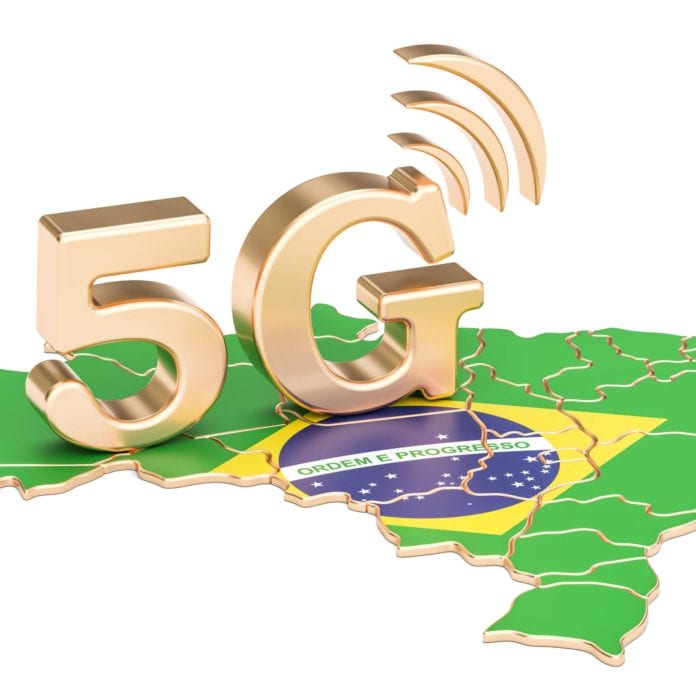The delay in the 5G spectrum auction could cost Brazil billions
Brazil is proving to be a popular destination for 5G equipment vendors. Both Ericsson and Nokia have demonstrated significant interest in the South American country, with the former announcing plans to invest $238.3 million to install a new assembly line for 5G the country, and the latter hoping to attract opportunities in the market with the future auction of 5G spectrum. In fact, in a recent interview with Reuters, Nokia’s CTO in Latin America Wilson Cardoso, called Brazil’s 5G spectrum auction “the world’s biggest-ever.”
However, while Nokia was confident that Brazil’s telecommunications regulatory agency Anatel would carry out the auction in March as scheduled, it is now clear that it has been delayed in a setback that could cost the state billions in lost tax revenues and investments.
The new timeline puts the auction at the end of this year, or, as some analysts have suggested, most likely the beginning of next year, as a dispute around the rules of the affair continues to circulate.
Unsurprisingly, the delay has caused some serious disappointment, particularly from those who have invested so much in the Brazilian 5G market. Ericsson’s Director of Government Relations, South America Tiago Machado highlighted the urgency of the situation: “We need policymakers and regulatory [agencies] to take the proper measures to make sure this goes forward in a timely manner. This is very important because of the impact that having, or not having, this next year could have not only on the telecommunications sector but the Brazilian economy.”
Brazilian operators, however, are continuing to develop their 5G plans, even as Anatel has failed to provide a concrete date for when they will finally have the opportunity to bid for the coveted spectrum.
Vivo
Vivo, the leading wireless and fixed company in Brazil, began testing the 5G-capable 3.5GHz band in Sao Paulo in August 2018 using an active Ericsson AIR 6468 5G NR-capable radio, with 64T64R Massive MIMO features.
And in July 2019, the telecom successfully tested 3.5GHz technology in Rio de Janeiro with Huawei. The end-to-end 5G solution involved the use of a 64×64 Massive MIMO configuration and a virtualized 5G core and underpinned a virtual reality (VR) demonstration.
From early on, Vivo has made it clear that VR and AR are a big part of its 5G strategy as the telecom is promising to deliver a richer mobile experience in the form of several 5G-enabled smart devices and applications. At MWC Shanghai last year, the telecom demonstrated its first commercial 5G smartphone and its AR glasses.
TIM
Last May, TIM, Telecom Italia’s Brazilian subsidiary, began its 5G tests on the 3.5 GHz frequency in the southern capital of Florianópolis. The trial was carried out using Huawei equipment and in partnership with the CERTI foundation, a public research and development organization. Download speed tests showed results of almost 1 Gbps.
And in November, the operator conducted a new 5G trial at Sao Paulo’s Morumbi shopping center made possible by Anatel’s decision to temporarily award the operator 3.5GHz spectrum license. The tests, which reportedly ran until December, were performed with Ericsson, using an LG V50 smartphone.
Pietro Labriola, chief executive officer of TIM Participacoes, has commented in the past on TIM’s desire to “be the pioneer” when it comes to 5G in both Brazil and Italy.
He also pointed out that the fate of Brazil’s 5G deployment continues to rest heavily on the frequency auction, which, as mentioned previously, is facing a disappointing delay.
Approaching 5G from a different angle, TIM selected Nokia AirFrame servers that feature second generation Intel Xeon Scalable processors to virtualize its data centers by the end of 2021, which, according to TIM CTIO Leonardo Capdeville, will play a critical role in the operator’s 5G pilot project.
“With this core virtualization, TIM is leading with a 5G pilot project over the network. This process also allows us to strengthen our customers’ data protection,” he said.
Claro
Claro has been demonstrating 5G for years, holding a “5G” technology demonstration at Futurecom 2016 with Ericsson and using the 15 GHz frequency band.
Then, a year later, almost to the day, the telecom worked with Huawei—and fellow América Móvil group operator Net—to conduct Brazil’s first live demonstration of Ultra HD 8K video streaming over a 5G experimental network. Initial testing showed a speed of 3.2Gbps and very low latency of 1ms, with 5G Huawei equipment over the 3.5GHz band
In November, Claro revealed plans to invest $7.8 billion over the next three years to build out mobile infrastructure, mostly focusing on its 4G network. However, during the same conversation with Brazilian President Jair Bolsonaro, Carlos Slim Domit, son of Claro Founder Carlos Slim, confirmed the telecom’s intention to participate in the 5G frequencies auction, despite his criticisms regarding some of the rules that Anatel has established for the auction.

